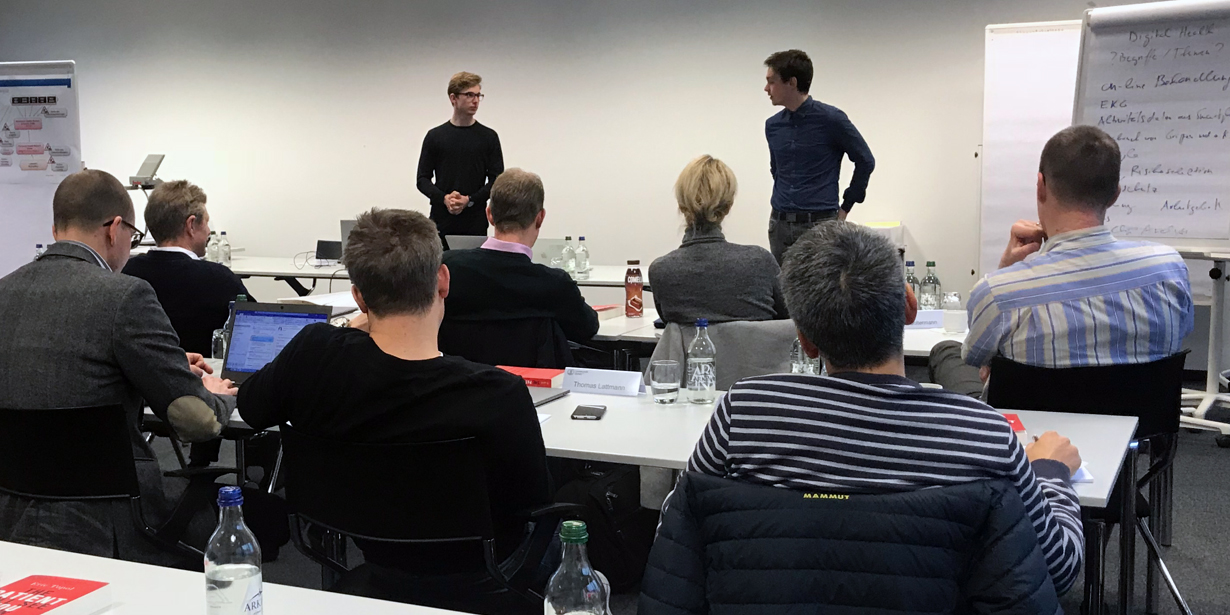Embracing innovation
Ernst Hafen is convinced that new teaching methods will make it easier for students to learn relevant skills. He helped to develop the new course in medicine at ETH.

Friday 12 January 2018. Two students in their first semester of medicine at ETH Zurich stand in front of 21 senior physicians, who are completing a CAS continuing education programme at the University of Zurich. The students present the established doctors with a summary of the book The Patient Will See You Now. Written by US cardiologist Eric Topol, it deals with future scenarios of a digitalised and “democratised” medicine in which patients make use of smartphones with expanded diagnosis functions to take on a much more active role than they do currently.
The students spent time focusing on the book in September, during the first week of their course. They then presented it to the doctors as an interactive Q&A session, confidently discussing its most important messages. Students teaching experts: this is part of the flipped-classroom concept with which ETH’s course in medicine is breaking new ground.

Opportunity for a new approach
A new degree programme always offers the opportunity to create a fundamentally new approach. With a degree course that leads to a professional qualification such as medicine, with strict requirements that still predominantly date back to the last century, this is a particular challenge – especially when you consider how quickly medicine is changing thanks to genomics, smartphone sensors, big data and artificial intelligence.
When designing courses on the basics of biology for the medicine programme, we used the principle of “reverse design”. That means that we first determined the skills that students attending the Bachelor’s degree in medicine should acquire. We then discussed how we could test these skills. It was only after this discussion that we decided what content we should teach the students. When designing the course, we were able to draw on the expertise and resources of the Center for Active Learning (CAL) at the Department of Biology.
We decided to conduct the Molecular Genetics and Cell Biology unit, taken by 330 students of medicine and the health sciences, using a flipped classroom approach. In two of the five class hours per week, the students work on the basics in self-study using learning modules specially developed for the unit. In the lectures, the concepts are then explained and expanded on using examples. Group work takes place every week; for example, an expert interview, or a case study on the molecular causes of a disease. Three lecturers, two CAL employees and 15 student assistants support the students during the semester.
"My job is to put what has been learned into context."Ernst Hafen
Strong support
I was once asked in a lecture why the students had to even attend, since all the documents were prepared in advance. This question once more made my role as a lecturer in the current university environment clear: my job is to put what has been learned into context and to discuss the concepts with the students. Not only me, but all the lecturers, the CAL team and the student assistants have learned a lot from discussions with the students.
Happily, it seems that the students think the same: the evaluation showed that the majority (82 percent) of students felt that the content they had learned was relevant or very relevant to their studies. The flipped classroom approach also received strong support: 75 percent of students would like similar models for other courses.
More online courses
The curricular specifications for medicine programmes are strict. However, the staff responsible for the degree programme at the Department of Health Sciences and Technology have done an incredible job of winning over those involved to a fundamentally new design for the programme. A modern degree programme requires new teaching methods and challenging learning modules, but also needs to embrace innovation in the clinical disciplines.
You could even go further: currently, lecturers from the University of Zurich teach ETH students about basic medical principles such as anatomy. I think that you could capitalise much more on interactive online courses here. There are already some available1, and they could – when paired with exercises and group discussions – replace traditional lecture-style teaching.
We have talented and motivated students at ETH. Our task is now to maintain this motivation throughout the course of study. I am convinced that we can better prepare our students for future challenges if we create more room during their studies for group work, book clubs and project work, such as the reading of Eric Topol’s book discussed earlier.
ETH Professor Ernst Hafen is the Director of Studies at the Department of Biology, and is responsible for the basics of biology in the new ETH medicine programme.
Further information
1 For example: external pagehttps://3d4medical.com/apps/complete-anatomycall_made
